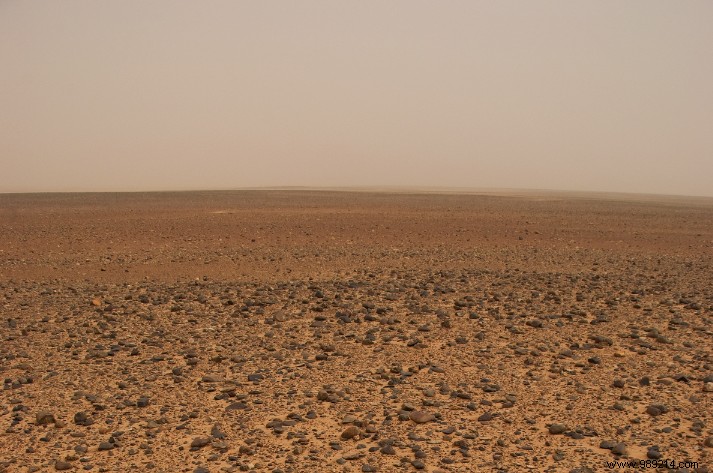Several billions of years ago, liquid water shaped the landscape of Mars, sheltered by a beautiful atmosphere. All that water has since disappeared from the surface. The question is:where did she go? According to researchers at JPL and Caltech, much of it is likely hiding underground.
About four billion years ago, Mars looked a lot like Earth. Studies suggest that the planet was home to an ocean in its northern hemisphere, which at the time contained as much water as half of the Atlantic. But "fast forward" a billion years and you're left with a cold, impossibly dry desert. From this humid past, only scars remain today, which our rovers and orbiters are studying.
So where did all that water go? The generally accepted answer is that it escaped into space.
Compared to Earth, Mars is indeed not very massive, which means that its gravitational field is quite weak. As a result, the nitrogen present in its primitive atmosphere escaped quite quickly. The planet also rapidly cooled, which had the effect of solidifying its once-liquid core. And without liquid core, no magnetic field.
Then a chain reaction follows. Deprived of its magnetic field, Mars found itself at the mercy of the solar wind which eroded its atmosphere. The planet's volcanism has also decreased, so its atmosphere has found it increasingly difficult to renew itself. In fact, the atmospheric pressure has decreased, and we know that the lower the pressure, the more difficult it is to maintain the liquid state.
Gradually, the Martian water then turned to steam, before finally escaping into space.
That said, while some of the Martian water certainly escaped in this way, a team of researchers argues that this process cannot explain all of this loss. According to their calculations, a large part of this water would be integrated into the minerals of the earth's crust.

As part of this work, the authors examined the amount of water in all its forms lining the Martian landscape throughout its history. They also took into account the chemical composition of its atmosphere and crust.
The team then focused on the ratio of "light" hydrogen to "heavy" hydrogen (or deuterium) . Deuterium is a rarer and heavier isotope of hydrogen with an extra neutron in its nucleus. In fact, it is less likely to be lost in space than the lighter form.
This means that over time, if water vapor escaped into space, it would leave behind a higher ratio of deuterium to ordinary hydrogen in the atmosphere.
After reviewing this report, they realized that something was wrong. Given the amount of water the planet was thought to contain, and given the observed rate of hydrogen leakage from spacecraft, the current deuterium to hydrogen ratio cannot be explained by atmospheric loss alone . Instead, they suggest that a large portion – 30-99% – has seeped into the minerals of the soil.
“ Whenever you have a rock and it interacts with water, there is a series of very complex reactions that form a hydrated mineral ” , explains Eva Scheller, who co-signs these works. This process, called "chemical weathering", also takes place on Earth (clay is an example).
On Earth, this absorbed water is then recycled back into the atmosphere through plate tectonics and volcanism. But Mars is not subject to these geological whims. Also, if water did get trapped in the ground, it's probably still there.
Study details are published in the journal Science .